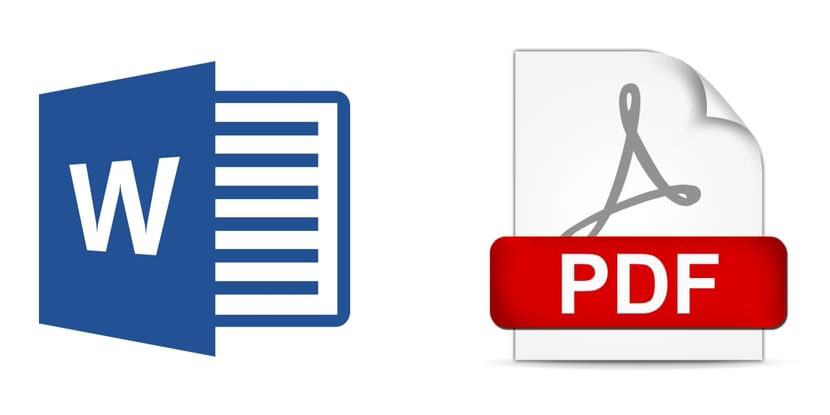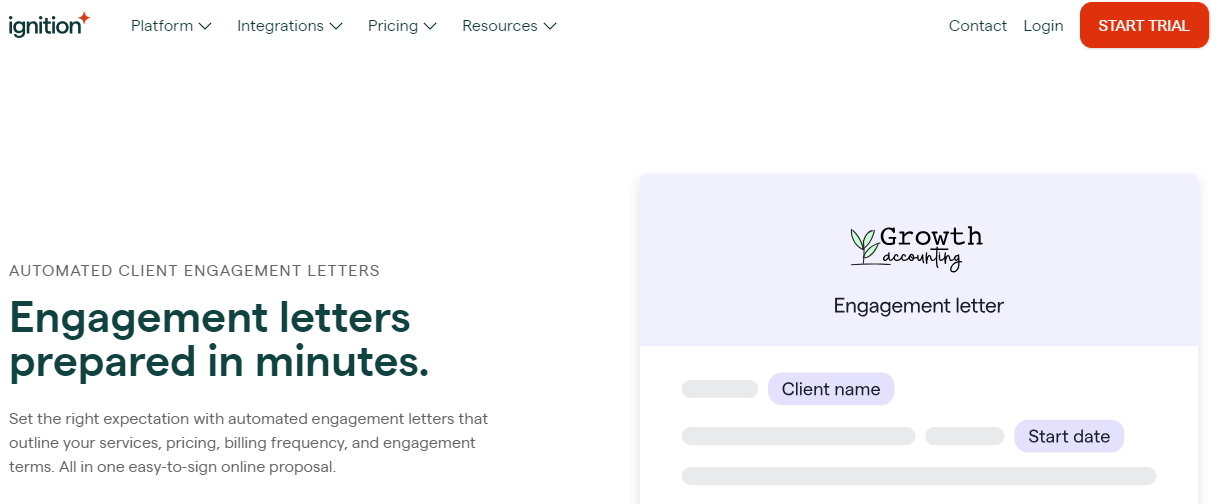Does your firm use an accounting engagement letter when signing on a new client? This post is a deep dive into why you should.
In this article, you’re going to learn about:
- What an accounting engagement letter for your firm is
- The purpose and need of a quality engagement letter
- Items to put in yours
- What to use to send this valuable document
- Sample sections and template letters
- How a future-ready firm can seamlessly share the engagement letter
Let’s get started.
Table of Contents
- What is An Accounting Engagement Letter?
- Why You Need An Engagement Letter For Your Firm
- Sample Engagement Letter
- Key Terms For Your Engagement Letter
- Software For Your Engagement Letter
What is An Accounting Engagement Letter?
Engagement letters for your accounting or CPA firm is a legal document agreement sent to your clients that describes the overall business relationship with your client, clearly defining:
- Services included and how they’ll play out
- Each other’s responsibilities
- The clearly-defined scope of your work
- Price and payment terms
In addition to ensuring a structured business relationship, these documents play a crucial role in the applicable civil justice system.
Incorporating financial statements adds an extra layer of transparency to the engagement, facilitating a comprehensive understanding of the financial aspects within the context of the legal framework.
Why You Need an Engagement Letter for Your Firm
There are a few reasons why your firm needs an engagement letter in place:
- Prevent Scope Creep: To clearly define the terms, fee structure, and services (ex. provide bookkeeping services) inside your proposal.
- Mitigate Your Firm’s Risk: Avoid clients who might not be a good fit.
- Reinforce Values (and Quality Standards): Sets the tone for the relationship and starts everyone off on level ground.
- Legal Protection: Defines the rights and obligations of both parties, which can be crucial in protecting your firm.
- Facilitates Project Adjustments and Changes: To adapt to evolving client needs without jeopardizing the understanding between your firm and the client.
Sample Engagement Letter
Disclaimer: These example and template sections are simply ideas to get you started and are not to be considered advice in creating an agreement or a legal document.
Consult with your lawyer to ensure that your engagement letter should be in compliance with applicable laws and regulations.
Dear {client name},
It’s been a pleasure getting to know your business and we look forward to helping your business reach new heights.
Below you’ll find our engagement letter, which details our solution and the nature of our engagement. Should you have any questions, do not hesitate to reach out.
Thank you!
Engagement Letter
{insert professional body requirements, such as the purpose of the engagement letter, dispute resolution clauses, file inspection clauses, responsibilities for you and your client, how confidential information is handled, etc., if applicable and/or if desired}
Pricing and Services
Below are the services and features included in this engagement. For full details of each service, please refer to the Service Terms section below.
{insert all services/features and price}
The total price price of this engagement is {total price} and is exclusive of any applicable taxes.
Period of Engagement
The engagement starts on {insert start date}. The period for which we are responsible for is the {insert month/day/year} tax year.
Payment Terms
Monthly prices of {insert monthly price} will be invoiced monthly and will commence on the first day of the month following the acceptance of this engagement letter.
An upfront amount of {insert any upfront amount required, if applicable} is due upon acceptance of this engagement letter.
All invoices are payable upon receipt and will be set up for pre-authorized bank debit / ACH payments. Upon acceptance of the engagement letter, payments will be automatically scheduled for payment following completion of the PAD/ACH form.
Price Guarantee
If you ever receive an invoice without first authorizing the service and price, you are not obligated to pay for that invoice.
Prices will not exceed the price indicated in this engagement letter unless services rendered fall outside the scope of the agreed upon engagement.
Auto-Renewal
All plans with a monthly subscription will automatically renew following {engagement end date}. The recurring services will renew for a 12-month period at the same terms and at the same monthly price, on an annualized basis.
An email will be sent out approximately 30 days before the completion of the current engagement to schedule a meeting to understand your needs for the following year and to ensure that you are on the correct plan.
Should this meeting not take place and/or should the updated engagement letter not be signed for whatever reason, the current plan will auto-renew.
Unanticipated Services
We price all of our services on a fixed price basis before any of the work commences. In order to set clear expectations around the services provided, we define what each service consists of in the “Service Terms” section that follows.
The parties agree that if an unanticipated need or service arises over and above the defined services in this agreement, that we agree to perform this additional work at a mutually agreed upon price before any work is to be performed.
Service Terms
The following services and features included in this engagement are defined as follows:
{insert pertinent service terms}
This engagement letter includes the relevant terms that will govern the engagement for which it has been prepared. Any material changes or additions to the terms set forth in this letter will only become effective if evidenced by a written amendment to this letter, signed by all of the parties.
If you have any questions, please don’t hesitate to contact us. If the above terms are clear, please sign in the space below.
We look forward to working with you.
___________________________
{Your name}
_____________________________
{Your client’s name}
Geo-Specific Engagement Letter Templates
Accounting is a global service, and each geographic area has its own regulations, specific structures, and other differences.

There are also a number of fantastic resources available, showing nuances in their accounting and bookkeeping engagement letter template. Below, I’ve included a couple of sample engagement letters for several countries.
Here are a few, with their corresponding area:
Key Terms For Your Engagement Letter
If you’re reading this far, you likely have an idea about what each component of the contents of engagement letters, as a legally binding document, usually have.
Here are the key terms you need to be familiar with:
- Professional body requirements: This is where you begin to get into details, including the overall purpose of the letter, how you’ll handle disputes, and other key items of your engagement
- Pricing and Services: The agreed-upon fees for the accounting services and the specific services that the accounting firm will provide
- Payment terms: A simple statement of when you collect (e.g. upfront, quarterly)
- Period of engagement: Refers to the duration during which the firm will provide its services
- Termination clause: Defines the circumstances under which either party can terminate the engagement, including reasons such as non-payment or breach of terms.
- Confirmation of terms: This is where the client’s signature is placed, acknowledging they’ve read and understood the contents of your letter
- Unanticipated services: A great tool to explain what happens when work exceeds agreed-upon terms
- Dispute resolution: Includes provisions for resolving disputes, such as through mediation or arbitration, to avoid legal action.
- Price Guarantee: Assurance provided by the firm to the client regarding the agreed-upon pricing for the services
- Renewal terms: Addresses whether there are provisions for the automatic renewal of the engagement beyond the initial period.
NOTE: Some of these components are flexible, others aren’t. For example, every letter should have the confirmation of terms, while others may exclude the company overview.
Software For Your Engagement Letter
Another important aspect you must consider is how you’ll send the engagement letter to your clients.
Word/PDF

This isn’t my favorite option, but it is free and easy to set up.
That being said, if you’re going for a high-quality client and you’re building a cloud-based accounting firm, these formats might not be the most ideal.
Ignition

You can automate the creation of detailed engagement letters through Ignition. Consolidating all related aspects into a single online proposal is possible, which allows for streamlined client communication and agreement.
Note: This is my personal favorite. It’s easy to use, has the most automation capabilities, and helps with 3-tiered pricing models.
PandaDoc

PandaDoc serves as a comprehensive solution for accountancy firms seeking user-friendly functionality and efficient document processing.
As a fully-featured document editor, it provides the flexibility to design and customize your accounting and bookkeeping services engagement letters according to preferences before client distribution. Additionally, PandaDoc facilitates the capture of digital signatures for documents.
Ready to Create Your Engagement Letter?
Creating your accounting engagement letter can take a bit of work. But the benefits you’ll receive make that work worthwhile, many times over.
That written agreement will set the expectation for your client, give you a resource to point them back to whenever anything is unclear, and provide a clear look into the type of client you want to attract in your business.
Will it change over time? Yep.
Are there still going to be issues with some clients? Absolutely.
But this is exactly the kind of big step forward that moves you toward a scalable accounting firm.





Satisfactory
An awesome resource for accounting engagement letters! I found the templates and samples provided really helpful. Quick question: Are there any specific considerations for engagement letters in the context of international clients or cross-border transactions? Thanks!